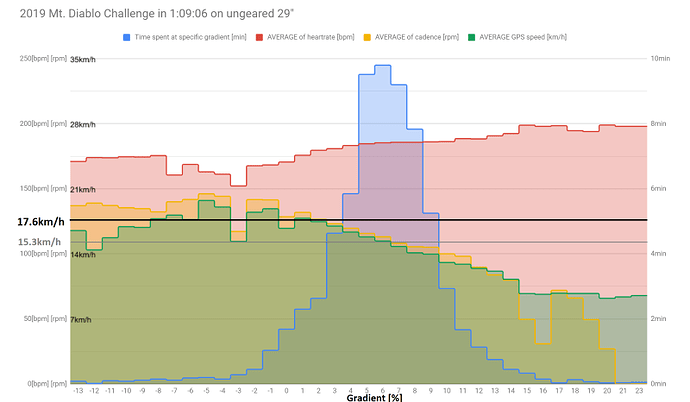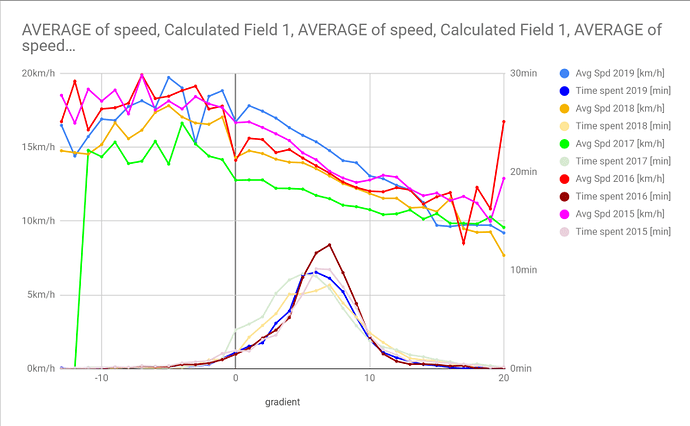We represented with 4 unicyclists at this year’s race. Weather was great, with little to no wind (~3mph SSW). Starting at around 43F and ending at 63F for my ride.
Mt Diablo Challenge is an uphill cycling race. There’s been many unicyclists at the event in the past (long before I even started riding  ).
).
Ben: 1:06:59.8
Harrison: 1:09:06.6
Josh: 1:29:01.1
Jim: 1:45:36.3
Ben’s new record time is incredible! People I talked with afterwards said he was riding faster than some “professional bicyclists”. 
As far as riding sub 1-hr, I think a 36" or a guni 29"/36" is almost necessary. (and crazy fitness. I’m not even close to 1hr on a bike)
Since I rode a 29"x2.35" ungeared, I decided to look at my data a bit.
Sub-1hr would require spinning at around 125rpm for the whole time. That’s how fast I was spinning when the gradient was around 0-1%. Most of the ride is 3-10%. The picture below shows my average speed/cadence for different grades throughout the ride. (total avg speed for me was about 15.3
kmh)
Interesting thing from the chart (maybe real or just data inaccuracies), is that my cadence deviates higher than gps speed for higher grades around 8-10%. My hypothesis is that I ride in a more squiggly path when it’s steeper.
Ben’s facebook post with photos  :
:
(it’s supposed to be 11.2mi = 18.0km, but I think my garmin underestimates and says 17.6km)







